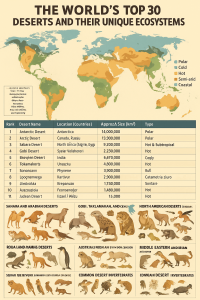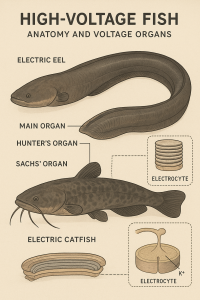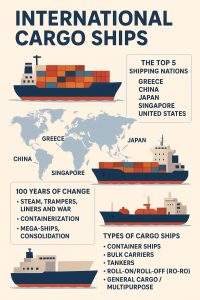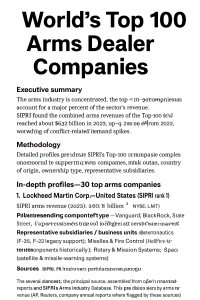Introduction
Aluminum is one of the most important materials in modern civilization. From the smartphone in your pocket to the airplane flying overhead, from cooking foil in your kitchen to the power lines bringing electricity to your home, aluminum is everywhere. Yet this silvery-white metal was once more valuable than gold. Understanding aluminum means understanding how we transformed one of Earth’s most common elements into one of our most useful materials.
What is Aluminum?
The Basic Structure
Aluminum is a chemical element with the symbol Al and atomic number 13. This means every aluminum atom has 13 protons in its nucleus and 13 electrons orbiting around it. These electrons are arranged in layers, like an onion:
- The first layer has 2 electrons
- The second layer has 8 electrons
- The third outer layer has 3 electrons
Those 3 outer electrons are the key to aluminum’s behavior. They easily break away, which is why aluminum bonds so readily with other elements and why it conducts electricity well.
Physical Properties
Appearance: Aluminum is a silvery-white metal with a slightly bluish tint. When freshly cut, it has a bright, shiny surface.
Weight: Aluminum is remarkably light. Its density is only 2.7 grams per cubic centimeter, which is about one-third the weight of steel. This lightness combined with strength makes it incredibly valuable.
Melting Point: Aluminum melts at 660.3°C (1220.5°F). This relatively low melting point (compared to iron at 1538°C) makes it easier and cheaper to process.
Conductivity: Aluminum conducts electricity about 60% as well as copper, but because it weighs so much less, it’s often more efficient for power transmission lines.
Strength: Pure aluminum is relatively soft, but when mixed with other metals (creating alloys), it can become as strong as steel while remaining much lighter.
Chemical Properties
Reactivity: Aluminum is actually highly reactive. The moment aluminum is exposed to air, it immediately forms a thin, invisible layer of aluminum oxide on its surface. This protective layer is incredibly tough and prevents further corrosion. This is why aluminum doesn’t rust like iron, even though it’s more chemically active.
Bonding: Aluminum forms strong bonds with oxygen. In fact, aluminum’s attraction to oxygen is so powerful that extracting pure aluminum from its ore requires enormous amounts of energy.
Non-magnetic: Unlike iron, aluminum is not magnetic. This property makes it useful in applications where magnetic interference must be avoided.
Where Aluminum Comes From: The Story of Bauxite
Bauxite Ore
Aluminum never exists in pure form in nature because it bonds so readily with other elements. Instead, we find it in a reddish-brown rock called bauxite. Bauxite is not a single mineral but a mixture of several aluminum-containing compounds:
- Gibbsite: Al(OH)₃ – Contains about 65% aluminum oxide
- Boehmite: γ-AlO(OH) – Contains about 85% aluminum oxide
- Diaspore: α-AlO(OH) – Contains about 85% aluminum oxide
Bauxite also contains iron oxides (which give it the reddish color), silica, and titanium dioxide.
How Bauxite Forms
Bauxite forms in tropical and subtropical regions through a process called laterization. Here’s how it happens:
- Weathering: Heavy rainfall and heat break down rocks that contain aluminum-bearing minerals (like feldspars and clays)
- Leaching: Water washes away soluble materials like sodium, potassium, and calcium
- Concentration: Aluminum compounds remain behind because they don’t dissolve easily, gradually concentrating over millions of years
- Accumulation: Layers of aluminum-rich material build up near the surface
The best bauxite deposits formed 20-60 million years ago in ancient tropical environments.
Global Distribution
The major bauxite mining countries are:
- Australia: The world’s largest producer (about 30% of global production)
- China: Second largest producer and the largest consumer
- Guinea: Home to the world’s largest reserves (over 7 billion tonnes)
- Brazil: Major producer in South America
- India: Significant producer in Asia
- Jamaica: Historic Caribbean producer
The Two-Stage Production Process
Making aluminum from bauxite requires two distinct processes. Each has its own chemistry, challenges, and resource requirements.
Stage 1: The Bayer Process (Making Alumina)
The Bayer Process, invented by Austrian chemist Karl Josef Bayer in 1887, converts bauxite ore into pure aluminum oxide (alumina or Al₂O₃).
Step-by-Step Process:
- Crushing and Grinding: Bauxite ore is crushed into small particles and mixed with water to create a slurry (a thick liquid mixture).
- Digestion: The slurry is pumped into large pressure vessels called digesters. Here, it’s mixed with hot sodium hydroxide (caustic soda) solution at temperatures of 140-250°C and high pressure. The chemical reaction is: Al(OH)₃ + NaOH → NaAlO₂ + 2H₂O This dissolves the aluminum compounds, creating sodium aluminate solution. The iron oxides and other impurities don’t dissolve and remain as solid “red mud.”
- Clarification: The mixture is filtered and washed to separate the liquid (containing dissolved aluminum) from the solid red mud waste. Red mud is a major environmental challenge of aluminum production.
- Precipitation: The sodium aluminate solution is cooled and seeded with fine alumina crystals. This triggers crystallization of pure aluminum hydroxide: NaAlO₂ + 2H₂O → Al(OH)₃ + NaOH The caustic soda is recovered and recycled back to the digestion stage.
- Calcination: The aluminum hydroxide crystals are washed and then heated in rotary kilns at about 1000°C. This drives off water, leaving pure white alumina powder: 2Al(OH)₃ → Al₂O₃ + 3H₂O
Output: It takes approximately 4-5 tonnes of bauxite to produce 2 tonnes of alumina.
Stage 2: The Hall-Héroult Process (Making Aluminum Metal)
The Hall-Héroult Process, independently discovered by Charles Martin Hall and Paul Héroult in 1886, uses electrolysis to extract pure aluminum metal from alumina. This breakthrough made aluminum commercially viable.
Step-by-Step Process:
- Preparation: Alumina powder is dissolved in molten cryolite (Na₃AlF₆) at about 960-980°C. Cryolite acts as a solvent that allows the alumina to melt at a much lower temperature than it would alone (alumina normally melts at 2072°C).
- Electrolysis: The molten mixture is placed in large rectangular steel containers called pots or cells, which can be over 10 meters long. These pots are lined with carbon (graphite) blocks that serve as the negative electrode (cathode). Carbon blocks are also suspended into the molten mixture from above as positive electrodes (anodes).
- Electrical Reaction: When massive amounts of direct current electricity (80,000-300,000 amperes per pot) pass through the molten mixture, chemical reduction occurs: At the cathode: Al³⁺ + 3e⁻ → Al (liquid aluminum forms) At the anode: 2O²⁻ → O₂ + 4e⁻ (oxygen gas forms) The oxygen reacts with the carbon anodes: C + O₂ → CO₂
- Collection: Pure liquid aluminum (melting point 660°C) is denser than the molten cryolite mixture, so it sinks to the bottom of the pot. It’s periodically siphoned off through a tap.
- Casting: The liquid aluminum is transported in large crucibles to a casting facility where it’s poured into molds to create:
- Ingots (large blocks)
- Billets (cylindrical shapes)
- Slabs (flat rectangular shapes)
These forms are then shipped to manufacturers for further processing.
Output: Approximately 2 tonnes of alumina produces 1 tonne of aluminum metal.
Therefore: 4-5 tonnes of bauxite → 2 tonnes of alumina → 1 tonne of aluminum
Energy and Water Requirements for 1000 Tonnes
Let’s calculate what it takes to produce 1000 tonnes (1,000,000 kilograms) of aluminum from start to finish.
Energy Requirements
Stage 1 – Bayer Process (Bauxite to Alumina):
- Energy needed per tonne of alumina: 400-600 kWh
- For 1000 tonnes aluminum, we need 2000 tonnes alumina
- Total energy: 2000 tonnes × 500 kWh (average) = 1,000,000 kWh
- This includes steam generation, grinding, and calcination
Stage 2 – Hall-Héroult Process (Alumina to Aluminum):
- Energy needed per tonne of aluminum: 13,000-15,500 kWh
- For 1000 tonnes aluminum: 1000 × 14,000 kWh (average) = 14,000,000 kWh
- This is almost entirely for electrolysis
Total Energy for 1000 Tonnes of Aluminum: 15,000,000 kWh (15 million kWh or 15 GWh)
To put this in perspective:
- This is enough electricity to power about 1,400 average American homes for an entire year
- It’s equivalent to the energy in 1,286 tonnes of coal or 4,776 barrels of oil
- A large wind turbine (3 MW) would need to run for 208 days straight to generate this much electricity
This massive energy consumption is why aluminum smelters are typically located near cheap power sources like hydroelectric dams or natural gas plants.
Water Requirements
Stage 1 – Bayer Process:
- Water needed per tonne of alumina: 2,000-3,000 liters
- For 2000 tonnes of alumina: 2000 × 2,500 liters (average) = 5,000,000 liters
- Water is used for making slurry, washing, and cooling
- Much of this is recycled within the plant
Stage 2 – Hall-Héroult Process:
- Water needed per tonne of aluminum: 1,000-2,000 liters
- For 1000 tonnes of aluminum: 1000 × 1,500 liters (average) = 1,500,000 liters
- Water is primarily for cooling systems
- Most of this is also recycled
Total Water for 1000 Tonnes of Aluminum: 6,500,000 liters (6.5 million liters or 6,500 cubic meters)
To put this in perspective:
- This is enough water to fill about 2.6 Olympic-sized swimming pools
- It’s the daily water use of about 18,000 people in developed countries
- It equals about 1,720,000 gallons
Note: Most modern aluminum plants recycle 90-95% of their process water, so actual freshwater withdrawal is much lower, though the total water circulated through the system is this amount.
Additional Materials Needed for 1000 Tonnes
- Bauxite ore: 4,000-5,000 tonnes
- Caustic soda (NaOH): 50-80 tonnes
- Carbon anodes: 400-450 tonnes (these are consumed in the process)
- Cryolite and other fluorides: 30-50 tonnes (mostly recycled)
Why Is Aluminum Production So Energy-Intensive?
The Hall-Héroult process requires massive amounts of electricity for a fundamental chemical reason: the bond between aluminum and oxygen in alumina is extremely strong. Breaking this bond to release pure aluminum requires forcing electrons into the aluminum ions against nature’s strong preference for them to stay bonded to oxygen.
Think of it like rolling a boulder uphill. The aluminum-oxygen bond is at the bottom of a very deep valley (low energy state), and we need to push it up to a high peak (high energy state) to separate them. This “uphill push” requires enormous energy input.
The energy efficiency of aluminum production has improved significantly:
- 1880s: 50,000+ kWh per tonne
- 1940s: 20,000 kWh per tonne
- Today: 13,000-15,500 kWh per tonne
- Theoretical minimum: 6,340 kWh per tonne (we can never achieve this due to thermodynamic limits)
Aluminum vs. Rare Earth Elements: A Critical Distinction
It’s important to clarify that aluminum is NOT a rare earth element. This is a common misconception worth addressing thoroughly.
What Are Rare Earth Elements?
Rare earth elements (REEs) are a group of 17 metallic elements comprising:
The Lanthanides (15 elements):
- Lanthanum (La), Cerium (Ce), Praseodymium (Pr), Neodymium (Nd), Promethium (Pm), Samarium (Sm), Europium (Eu), Gadolinium (Gd), Terbium (Tb), Dysprosium (Dy), Holmium (Ho), Erbium (Er), Thulium (Tm), Ytterbium (Yb), Lutetium (Lu)
Plus two chemically similar elements:
- Scandium (Sc) and Yttrium (Y)
Despite the name “rare,” these elements aren’t necessarily scarce in Earth’s crust. The term “rare” refers to how difficult it is to find them in concentrated deposits and extract them in pure form. They’re dispersed in small quantities across many minerals and are chemically very similar to each other, making separation challenging.
Key Differences Between Aluminum and Rare Earths
| Characteristic | Aluminum | Rare Earth Elements |
|---|---|---|
| Abundance | 8% of Earth’s crust (3rd most abundant element) | 150-220 parts per million (Cerium is most common) |
| Concentration | Forms large, pure deposits (bauxite) | Dispersed, mixed together in small amounts |
| Extraction | Well-established, two-step process | Complex, multi-stage chemical separation |
| Production scale | 70+ million tonnes per year globally | About 300,000 tonnes per year globally |
| Main uses | Construction, transportation, packaging, electrical | Magnets, electronics, batteries, catalysts, phosphors |
| Cost | $2,000-2,500 per tonne | $5,000-500,000+ per tonne (depending on element) |
| Recycling rate | 76% for automotive, 50% overall | <1% (mostly not recycled) |
| Environmental impact | Red mud, high energy use | Radioactive waste, toxic chemicals, water pollution |
Why the Confusion?
People sometimes confuse aluminum with rare earths because:
- Aluminum was once rare and precious (more valuable than gold in the 1850s) before the Hall-Héroult process
- Both require significant processing to extract from ore
- Both are critical for modern technology
- The term “rare earth” sounds like it should include many metals
However, they’re completely different in terms of chemistry, abundance, production methods, and applications.
Uses of Rare Earth Elements
Since we’ve mentioned rare earths, here’s what they’re actually used for:
Neodymium & Praseodymium: Powerful permanent magnets in electric vehicles, wind turbines, hard drives, headphones
Lanthanum: Battery electrodes, camera lenses, water treatment
Cerium: Catalytic converters, glass polishing, self-cleaning ovens
Dysprosium & Terbium: Added to magnets for high-temperature performance, fluorescent lamps
Europium: Red phosphors in LED lights and screens
Yttrium: LED phosphors, lasers, superconductors, cancer treatment
Scandium: Aircraft alloys, high-intensity lights, fuel cells
China currently produces about 70% of the world’s rare earth elements, which has created supply chain concerns for many countries.
The History of Aluminum: From Precious to Common
Ancient Times to 1800s
Although aluminum is extremely common, ancient civilizations never isolated pure aluminum. They used aluminum compounds (like alum) for dyeing and medicine, but the metal itself remained unknown.
In 1825, Danish physicist Hans Christian Ørsted first isolated tiny amounts of aluminum, but the process was impractical and expensive.
In 1855, French chemist Henri Sainte-Claire Deville improved the process, but aluminum still cost $550 per pound (equivalent to $17,000 per pound today). Aluminum was so precious that:
- Napoleon III had aluminum cutlery for honored guests (while others used gold)
- The Washington Monument was topped with a 100-ounce aluminum pyramid (the largest piece of aluminum at the time)
- It was displayed at the 1855 Paris Exposition as “silver from clay”
The 1886 Revolution
Everything changed in 1886 when two young scientists—23-year-old Charles Martin Hall in Ohio and 22-year-old Paul Héroult in France—independently invented the electrolytic process (now named after them) within months of each other. Neither knew of the other’s work.
This breakthrough, combined with Bayer’s process for making pure alumina (1887), reduced the price of aluminum by 96% within a decade. By 1900, aluminum cost just $2 per pound.
20th Century Growth
- 1900s-1920s: Aluminum used in cooking utensils, bringing it into homes
- 1930s: Aircraft industry adopts aluminum alloys for lightweight planes
- 1940s: World War II drives massive expansion; production increases 10-fold
- 1950s-1960s: Aluminum becomes standard in construction, electrical transmission
- 1970s: Aluminum beverage cans replace steel cans
- 1980s-present: Automobile industry increasingly uses aluminum for fuel efficiency
Today, aluminum is the second most used metal in the world (after iron/steel), with global production exceeding 70 million tonnes annually.
Environmental Impact and Sustainability
The Challenges
Energy Consumption: Aluminum production accounts for about 2% of global electricity use. Most of the carbon footprint comes from electricity generation, not the process itself.
Red Mud: Each tonne of aluminum generates 2-3 tonnes of red mud waste. This alkaline, caustic material contains iron oxides, silica, and traces of heavy metals. Worldwide, over 4 billion tonnes of red mud are stored in containment facilities. Spills can be environmentally devastating.
Greenhouse Gases: Besides CO₂ from power generation and carbon anode consumption, aluminum smelters can emit perfluorocarbons (PFCs)—potent greenhouse gases—when electrolysis is disrupted.
Water Usage: While most water is recycled, bauxite mining and processing in water-scarce regions can stress local supplies.
Habitat Destruction: Bauxite mining, particularly in tropical regions, destroys forests and biodiversity.
The Solutions
Recycling: Aluminum is infinitely recyclable without quality loss. Recycling aluminum uses only 5% of the energy required to produce primary aluminum. A recycled can be back on shelves within 60 days. Current recycling rates:
- Beverage cans: 50-76% (depending on country)
- Automotive: 90%+
- Building materials: 85%+
Renewable Energy: Many modern smelters use hydroelectric power (Iceland, Norway, Canada, Brazil). Some are transitioning to solar and wind power.
Inert Anode Technology: Researchers are developing anodes that don’t consume carbon, which would eliminate direct CO₂ emissions from smelting and produce oxygen instead.
Red Mud Recovery: New technologies extract valuable materials from red mud (iron, titanium, scandium) and use it in construction materials, reducing waste.
Improved Efficiency: Modern smelters have reduced energy use by 20% compared to 1990s technology through better process control and design.
The Future of Aluminum
Aluminum’s future is bright for several reasons:
Electric Vehicles: EVs use 50% more aluminum than gasoline cars to offset battery weight while maintaining range.
Lightweight Construction: As fuel efficiency regulations tighten, aluminum is replacing steel in vehicles and aircraft.
Renewable Energy: Wind turbines and solar panel frames rely heavily on aluminum.
Circular Economy: High recyclability makes aluminum ideal for sustainable manufacturing.
Infrastructure: Developing nations are expanding electrical grids, which use aluminum conductors.
Global aluminum demand is projected to grow 40% by 2030, reaching nearly 100 million tonnes annually.
Conclusion
Aluminum is a remarkable material that has transformed from a precious curiosity to one of our most essential resources in just over a century. While it’s not a rare earth element—in fact, it’s one of Earth’s most abundant elements—the energy-intensive process required to extract it from ore makes it both valuable and environmentally significant.
Producing 1000 tonnes of aluminum requires approximately:
- 15 million kWh of electricity (enough to power 1,400 homes for a year)
- 6.5 million liters of water (2.6 Olympic pools)
- 4,000-5,000 tonnes of bauxite ore
- 400+ tonnes of carbon anodes
Understanding aluminum means appreciating the invisible infrastructure of modern life. Every aluminum can, airplane, or power line represents a sophisticated transformation of crushed rock through chemical reactions and massive electrical energy into a lightweight, durable, and recyclable material.
As we face climate change and resource constraints, aluminum presents both challenges and opportunities. Its production demands vast amounts of energy, but its recyclability, lightness, and durability make it essential for a sustainable future. The story of aluminum is ultimately a story of human ingenuity—how we learned to unlock the potential of one of Earth’s most common elements and turn it into something extraordinary.
The metal that was once displayed as treasure alongside the crown jewels now wraps our sandwiches and helps our smartphones stay cool. From precious to prosaic, from rare to ubiquitous, aluminum’s journey mirrors our own technological evolution. And as we continue to innovate in extraction, processing, and recycling, aluminum will remain a fundamental material shaping our world.







Be First to Comment